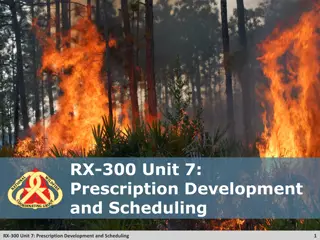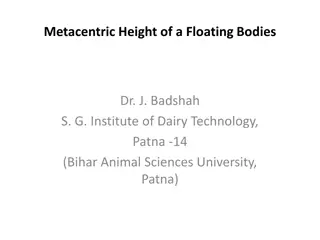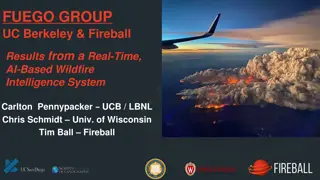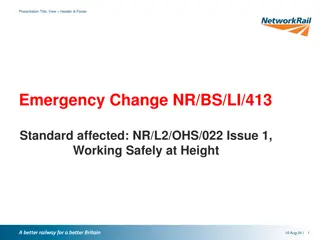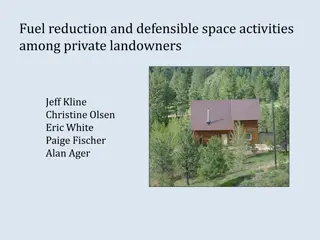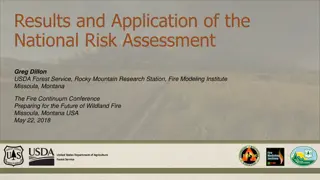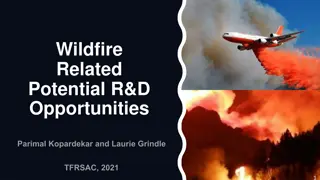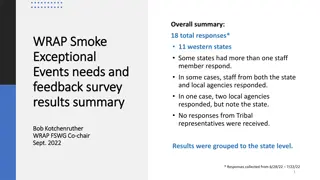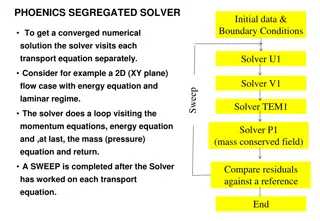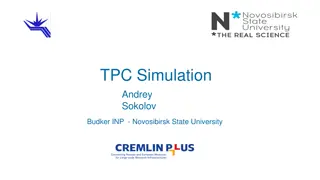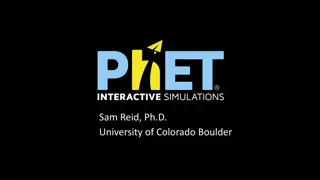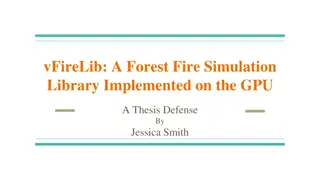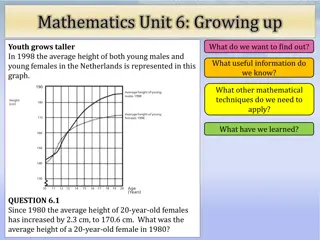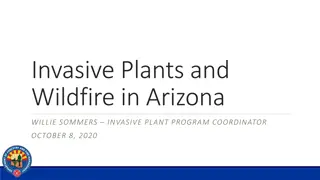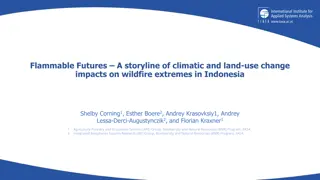Wildfire Plume Height Simulations
Fire smoke from wildfires can significantly impact human health, visibility, air quality, and regional climate change. Understanding the injection heights of wildfire plumes is crucial, as they can affect areas locally or hundreds of miles away depending on their height. This study explores the implementation of dynamic and empirical models to improve the accuracy of predicting plume rise heights. By refining data fitting and parameters, the research aims to enhance the precision of predicting wildfire plume behavior.
Download Presentation

Please find below an Image/Link to download the presentation.
The content on the website is provided AS IS for your information and personal use only. It may not be sold, licensed, or shared on other websites without obtaining consent from the author.If you encounter any issues during the download, it is possible that the publisher has removed the file from their server.
You are allowed to download the files provided on this website for personal or commercial use, subject to the condition that they are used lawfully. All files are the property of their respective owners.
The content on the website is provided AS IS for your information and personal use only. It may not be sold, licensed, or shared on other websites without obtaining consent from the author.
E N D
Presentation Transcript
Wildfire Plume Height Simulations by Ziming Ke
1. Introduction: why bother ? Fire smoke: human health, visibility, air quality, regional climate change. The injection heights of wildfire plumes are where smoke emissions are released into atmosphere. If injection heights are lower than boundary layer, the impact is locally; If injection heights are higher than boundary layer, smoke emissions can impact hundreds miles away and have longer lifetime. Examples: CMAQ with DaySomke presented a more reasonable PM2.5 profile, compared to observation, over Atlanta (Hu et al., 2008;Liu et al., 2009).
1. Introduction: Plume-rise Implementations CMAQ DaySmoke and AERO-RAMS Dynamic model: WRF with 1D Plume-rise model (Freitas et al., 2010). Application: Grell et al., 2010. Empirical parameterization: ECHAM6-HAM2.2 with Sofiev Parameterization (SP). Default setting is released around boundary layer. Application: Veira et al. 2015
1. Introduction: advantage and disadvantage Dynamic model Physical governing equations Micro-cloud physics: latent heat Borrowed from Cloud-Convection Scheme Computational costs: offline calculation. Boundary condition setting Val Martin et al., 2010; 2012
1. Introduction: advantage and disadvantage Empirical model Capture most important factors Avoid boundary condition Fast and suit for online coupled climate model Water vapor is not considered Can not be validated in afternoon
2. Research Plan Research target: improve both dynamic and empirical models. The latter will be implemented into climate model, and the former will be used as offline and validation source for empirical model when observation are not available. Dynamic model: change kzz profile adding Gaussian diffusion term change entrainment parameter Empirical model: refine MISR data fitting with FRP and meteorology parameters
3. Results: Dynamic Model ?2? ??2+???? ? ?? ?? ?? ?? ?? ??? = ??? ??
control New setting 3. Results: Dynamic Model
3. Empirical Model: refine MISR data Hypothesis: the plume height should be positively related to FRP under the same meteorology condition MISR data left: 1748 (7843) Grid data left: 663 Plumes CFSR grid box Grid box average
3. Empirical Model: Linear Regression FRP Boundary layer height Inversion strength Horizontal winds Environment specific humidity Heights = a1*FRP + a2*PBL + a3*Inversion + a4*winds + a5*Humidity
Dynamic Model Results 3. Fitting results MISR Dynamic Model
4. Conclusion and future work By changing kzz parameterization, the dynamical model results can be improved. By refining the MISR data, the plume heights can be represented by FRP and meteorology data. Improve the linear fitting method in order to reconstruct the plume heights in other time of a day.




